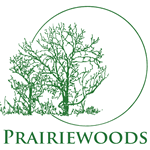Well here we are again, with a new spring season upon us! We’ve sprung our clocks ahead and the first official day of spring is coming up on Sunday. Hurray! The days are longer already, and the afternoon and evening sunlight will continue to stretch. The days are also warmer, which invites more time outside and more open windows when we’re inside. What will we do with all this blessed sunlight? What will we do with our spring days? Who will we spend the season with?
I’ve been seeing bald eagles at all hours lately—mornings, afternoons, evenings. Sometimes one. Sometimes a pair. Sometimes five of those magnificent, spirited birds will fly great big circles in the evening light. I know they will be there, yet they always surprise and delight me. Their flight seems to touch on that tender place in my heart where deep and automatic love dwells. The words “I love you” escape me each time I see them, like an inborn reflex of affection.
A couple of nights ago, I saw a bat flying around in the evening light. “Oh hello, you mysterious and misunderstood beauty! And my, how beautiful your wings look in the fading sun. Thank you for spending some time with me … and for challenging me to get to know you, even though I’m a little bit startled by you at first! I love you.”
The eagles, the bat and I have a lot in common. We all call the same place home. We live by the river, among trees and fish and insects and humans … and dogs and cats and squirrels and chipmunks and hundreds and hundreds of other creatures. We all love this place. And we don’t just live here. We inhabit this place.
The eagles and the bat and all this love talk reminds me of the wonderfully hopeful ecospiritual book Inhabitance: Ecological Religious Education by Rev. Dr. Jennifer R. Ayers. This author writes, “Calling a place ‘home’ inspires the desire to know it, as best as possible, with a ‘loving eye.’ That is to say, by approaching the earth (and its particular places that are most familiar) with a desire to see, know, and love it, humans encounter it as a living subject with which they might cultivate a relationship … The work of ecological faith, then, is embracing the divine remaking of human life so that it is ever more ‘at home’ on earth. That work is about learning inhabitance.”
I first heard about this book when it was assigned for the Ecotheologies class I took last year, as I began studying for a Master of Divinity. I was smitten by the idea of religious education including the invitation to “learn inhabitance.” To learn and love and live in a place so that the Earth is not just the distant and separate “environment” but rather a place we are in relationship with. A place we truly inhabit. And we do that inhabiting in community with other creatures (humans and bats and birds and water …). Ever since I read this book it has stayed with me, and I find myself telling people about it any chance I get!
In a few days (on the evening of Wednesday, March 23, from 6–8 p.m.) I’ll be offering a book discussion on Inhabitance. Even if you haven’t read the book yet, I’m happy to tell you about it and share conversational excerpts. Also, it will be wonderful to share and hear our own personal stories of inhabiting the places we live and love! During the evening conversation over Zoom, we’ll share dialogue as a group, then we’ll be invited to spend some time outside in the evening sunset and we’ll finish the evening back in conversation. You’re welcome to register here, if you can make it on Wednesday. If you can’t make it to the session, maybe you’ll spend the whole evening outside with the land you love.
—Angie Pierce Jennings, Prairiewoods hosted groups and hospitality coordinator


